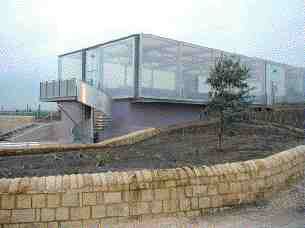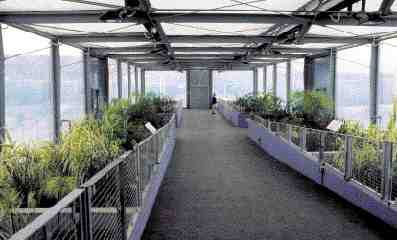Green Acres: Earth Centre, Yorkshire, England
Following our recent federal election, it is sobering to reflect on the relative positions of environmental issues on political agendas here and in Europe. In Canada, we heard some posturing in the campaign rhetoric, but substantive environmental issues were conspicuously absent from the serious debate. Part of the problem is that for most Canadians, sustainability remains an intangible concept, and there are few opportunities to see its principles put into practice.
In Europe, environmental issues feature prominently in the manifestos of mainstream political parties. The Green Party is represented in Germany’s governing coalition, which has adopted some of the most progressive environmental legislation in the world. Meanwhile, in Britain, the Labour government recently unveiled a controversial national transportation strategy aimed at reducing the nation’s dependence on and consumption of fossil fuels. That this plan even got off the starting blocks is attributable to the heightened awareness of Britons to environmental issues, resulting from major public education initiatives.
Prominent among these has been the creation of the Earth Centre, an ecological and educational park in which the principles of sustainability are made tangible through an integrated system of exhibitions and demonstration projects. The Earth Centre responds to the call for increased public education and debate made by the 1987 World Commission on Environment and Development. After ten years of planning and construction, the Earth Centre opened to visitors in the summer of 2000.
The site in Conisborough, Yorkshire, was designated in 1991, and encompasses 400 acres of disused colliery land. It is traversed by two rivers, and is accessible by both road and rail. The project took off in 1995, when the Earth Centre was designated a millennium project and received more than $120 million from the National Lottery. Additional funding came from regional development programs and the European Commission.
The rehabilitation of the site began with the cleanup of the contaminated soils and waterways, the reintroduction of indigenous plant species, and the planting of 60,000 trees. Phase 1 was completed with the construction of a wastewater treatment plant, the Planet Earth Gallery, an Ecology Centre and a restaurant. These structures all incorporate leading edge environmental strategies, and materials that are either recycled or have low environmental impact.
Phase 2, now under construction, includes a conference centre, a visitor centre and an interesting solar canopy structure. Designed by Fielden Clegg Architects, the canopy is a 10,000 square foot timber space-frame made from turned larch poles harvested from sustainable forests. The more than 2,000 members are connected by a similar number of steel nodes, each of which is unique. The structure will support Europe’s largest solar collector, generating clean energy for Earth Centre use and feeding the excess into the national grid.
In addition to its infant forest, the park features demonstration organic gardens and rehabilitated ponds and streams. Several traditional nomadic structures including Kirghiz yurts and a Mongolian ger dot the landscape. What appears at first to be a conservatory is, in fact, the wastewater treatment plant, its transparent skin consisting of air-filled mylar pillows supported on a steel frame. Inside, its stepped filtration beds abound with plants, symbolizing the transformation of waste products into valuable oxygen. A working model, complete with toilet seat to represent the wastewater intake, illustrates the principles of the process.
The humour, of course, belies a serious purpose. The Earth Centre also acts as a showcase for emerging technologies, products and services of sustainable industries, emphasizing their potential contribution to economic renewal.
Ultimately, the Earth Centre aims to provide a forum in which the public can interface with the policy-makers who influence, and the industries which implement, changes to the built environment. The knowledge gained from the design, construction and management of sustainable projects will become the Earth Centre’s greatest asset. Shared with design professionals and, more critically, clients and building users, this knowledge could greatly accelerate the implementation of sustainable development both in Britain and abroad.
Jim Taggart is an Associate of the Architectural Institute of British Columbia.



